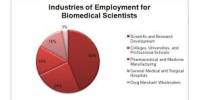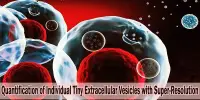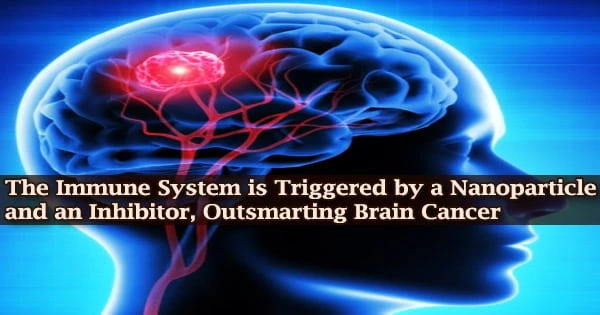Experts at Children’s National Hospital have created a new pre-clinical gene therapy for the rare condition limb-girdle muscular dystrophy (LGMD) 2B, which addresses the disease’s fundamental cellular weakness.
One kind of limb-girdle muscular dystrophy is LGMD2B (limb-girdle muscular dystrophy type 2B). These disorders affect voluntary muscles, such as the arms, legs, fingers, toes, and face muscles, which are muscles that are moved on purpose.
LGMD2B is a slowly progressive disease that affects the pelvic muscles and shoulder girdle muscles, causing muscular weakening and wasting (atrophy). Researchers used a single injection of a low-dose gene therapy vector to restore the ability of injured muscle fibers to mend in a way that reduced muscle degeneration and improved sick muscular function.
According to the study published in the Journal of Clinical Investigation, the treatment was safe, reduced fibro-fatty muscle degeneration, and restored myofiber size and muscle strength. People with signs and symptoms of LGMD2B are suspected of having the condition, and a muscle biopsy and genetic testing can confirm the diagnosis.
LGMD2B is a rare condition caused by a genetic mutation in a big gene called dysferlin, with an incidence of fewer than 1 in 100,000. Muscle weakness in the arms, legs, shoulder, and the pelvic girdle is caused by this defective gene.
Children and adults who are affected have difficulty walking, climbing stairs, and getting out of chairs. Within years of the onset of symptoms, most people lose their ability to walk and require assistance with daily functions such as showering, dressing, and moving. People with limb-girdle muscular dystrophy may require wheelchair assistance as the disease advances.
Some kinds of limb-girdle muscular dystrophy cause heart muscle (cardiomyopathy) weakness. Some people with this condition have minor to severe breathing problems as a result of the impairment of breathing muscles. Breathing issues can be severe enough in some circumstances that people need to use a machine to assist them to breathe (mechanical ventilation).
Currently, patients with LGMD2B have no gene or drug-based therapies available to them, and we are amongst the few centers developing therapeutic approaches for this disease.
Jyoti K. Jaiswal
This paper reported a new strategy that removes the need to package a big gene, such as dysferlin, or give a large vector dose to target the muscles, both of which are bottlenecks in current gene therapy efforts for muscular dystrophies.
“Currently, patients with LGMD2B have no gene or drug-based therapies available to them, and we are amongst the few centers developing therapeutic approaches for this disease,” said Jyoti K. Jaiswal, M.Sc. Ph.D., senior investigator of the Center for Genetic Medicine Research at Children’s National.
“We are working to further enhance the efficacy of this approach and perform a longer-term safety and efficacy study to enable the clinical translation of this therapy.”
The encoded protein is shortened or degraded as a result of the dysferlin genetic deficiency linked to LGMD2B. This impairs the capacity of the muscle fiber to repair, which is necessary for healthy muscles.
Common pre-clinical gene therapy techniques for recessive genetic disorders, such as LGMD2B, usually target the defective gene in the muscle, allowing it to produce the missing proteins.
“The large size of the gene mutated in this disease, and impediments in body-wide delivery of gene therapy vectors to reach all the muscles, pose significant challenges for developing gene therapies to treat this disease,” said Jaiswal.
To address these obstacles, the researchers devised a new method of slowing the disease’s growth. The researchers built on their prior discovery that the protein acid sphingomyelinase (hASM) is necessary for muscle cell repair.
The researchers used a single in vivo dose of an Adeno-associated virus (AAV) vector to produce a secreted version of hASM in the liver, which was subsequently carried to the muscles via blood circulation at a level that was found to be effective in mending LGMD2B patients’ injured muscle cells.
“Increased muscle degeneration necessitates greater muscle regeneration, and we found that improved repair of dysferlin-deficient myofibers by hASM-AAV reduces the need for regeneration, causing a 2-fold decrease in the number of regenerated myofibers,” said Daniel Bittel, D.P.T., PhD., research postdoctoral fellow of the Center for Genetic Medicine Research at Children’s National and a lead author of this study.
Sreetama Sen Chandra, Ph.D., who was a research postdoctoral fellow at Children’s National at the time of this study and served as co-lead author, also added that “these findings are also of interest to patients with Niemann-Pick disease type A since the pre-clinical model for this disease also manifests poor sarcolemma repair.”
The Center for Genetic Medicine Research and the Rare Disease Institute (RDI) at Children’s National are always looking for high-impact opportunities in pediatric genomics and precision medicine.
Industry, universities, federal agencies, start-up enterprises, and academic medical institutes are among the public and private partners at both centers. They also act as an international referral center for patients with uncommon diseases.
















